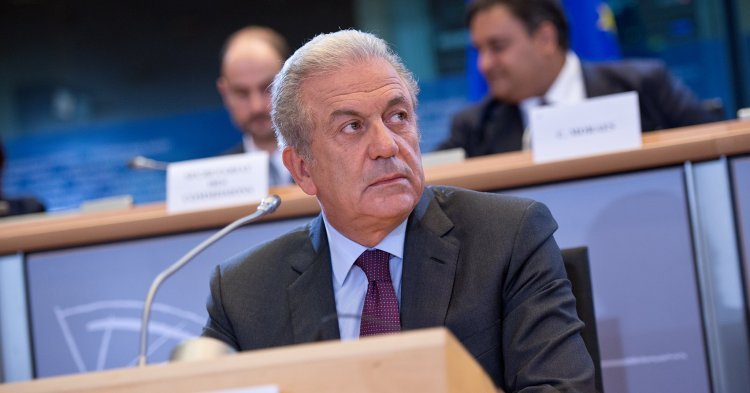European migration policy has tried in vain over 30 years to stem the phenomenon of illegal migration through security measures. The justification given has been the reinforcement of the legal networks for immigration. In an interview in 2013, Stefano Manservisi explained this while representing the Commission: “It is first a question of perception: showing that we are fighting against irregular immigration reinforces the idea that immigration is controlled, the law respected, which then makes more acceptable the development of legal immigration. (…) Then, that has also has the effect of dissuading those who have the intention to enter our countries in an irregular manner…” However, in addition to being ineffective, since immigration attempts are driven by despair and willretreat at no show of force, this politics leads to no respect for the fundamental rights of illegal migrants, notably for those classed by international law as ‘refugees’. Since 2004 it has been the agency Frontex that has been charged with the sprawling mission to coordinate the protection of the external borders of the European Union. These are closely guarded as their crossing grants access to a region of free movement where customs controls are subsidiary. The ‘guard dog of Europe’ theoretically bound to respect the 2000 European Union Charter of Fundamental Rights, but it lacks the means to honour it in practice. European Ombudsman Nikiforos Diamandouros, who launched an enquiry on the respect of migrants’ rights by Frontex in 2013, gives one example among many others: “each country is expected to have a placeto welcome these people and locate among them the asylum seekers and most vulnerable people. However Frontex is expected to be there to help and especially to register the people arriving, of which the majority don’t have papers. These people need to be able to understand what they are told and thus need the services of an interpreter. It often happens that Frontex registers people without adequate interpretation, which risks errors of naming.” Another problem remains that many missions are the responsibility of and at the discretion of States. One only remembers that it is because the Union was incapable of supporting, consequently, Italy in the financing of the rescue operation of migrants, ‘Mare Nostrum’, that this programme has had to come to an end in 2014. Another crying failure is the welcome of migrants in the camps run by states. On the Italian island of Lampedusa for example, the 5000 inhabitants are not able to decently accommodate the 5000 refugees while respecting international law. Moreover, Europe buries the right to asylum a little more all the time. Each member state has lowered its standards in recent times. The strong anxiety and the politicisation of the theme of immigration have contributed to reject en masse all ‘illegal foreigners’ without distinction. So today it comes to being able to track ‘fake refugees’ or ‘economic refugees’. France chose in the 1990s for example, a restrictive definition narrower than the definition of refugee given by the 1951 Geneva Convention. Charged with granting the right of asylum since 1997, the European Union has followed this line. The respect of the rights of migrants as a whole has fallen as a result of the externalisation of control missions on migratory flows and on the welcoming of illegal migrant populations. In effect, the strategy defined at Tampere in 1999 has been the collaboration with third states ‘producers of emigration’ by asking them to tighten the control over their own borders. Morocco - one of the most zealous partners- has notably shot illegal migrations in 2005 and 2008 while they were trying to cross ‘the fences’. It is also in these countries on the margins of Europe that an ‘offshoring’ of retention camps has taken place where refugees can be sorted from other illegal migrants. Europe has thus returned to the philosophy of ‘not in my backyard’. However this security and offshoring system which damages migrants’ rights could become durable. Indeed, ‘commercial xenophobia’ is flourishing and has been to the topic of an active lobby. The securing of borders, using more and more technology (drones, radar, etc), is a promising market for European businesses. But it is due to the continuing lack of integration of foreign and security policies in the European Union, and of means that one can be seriously concerned about the repetition of such inhumane dramas.

Dimitris Avramopoulos, Commission of Interior Affairs, proposes today to the Council measures to refocus the migration policy of the European Union after the dramas of the last month and in the face of a constant influx of migrants. The sharing of refugee quotas by member states has been suggested and has already made some Heads of State and Government grind their teeth. - © European Union 2014 - European Parliament
The shipwrecks of migrants, a recurring catastrophe, has called into question the capacity of European migration policy to rescue illegal migrants at the gateways of Europe and to do justice totheir rights. While it had been for a long time a land of emigration, the Europe of today must now meet the challenge of a huge influx of peoples coming from Africa and the Middle East, on which it exerts a strong force of attraction.
Follow the comments: |
|
